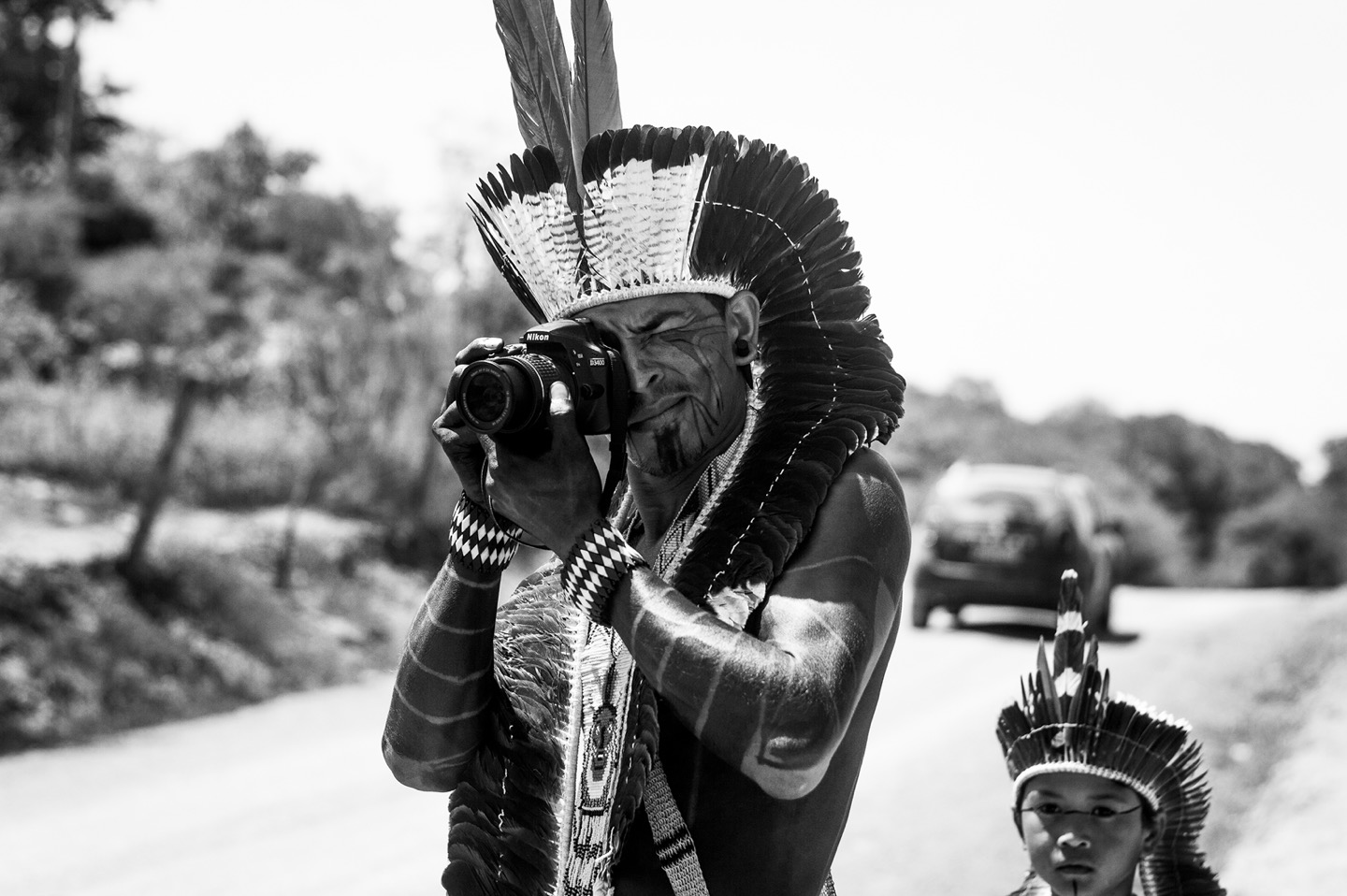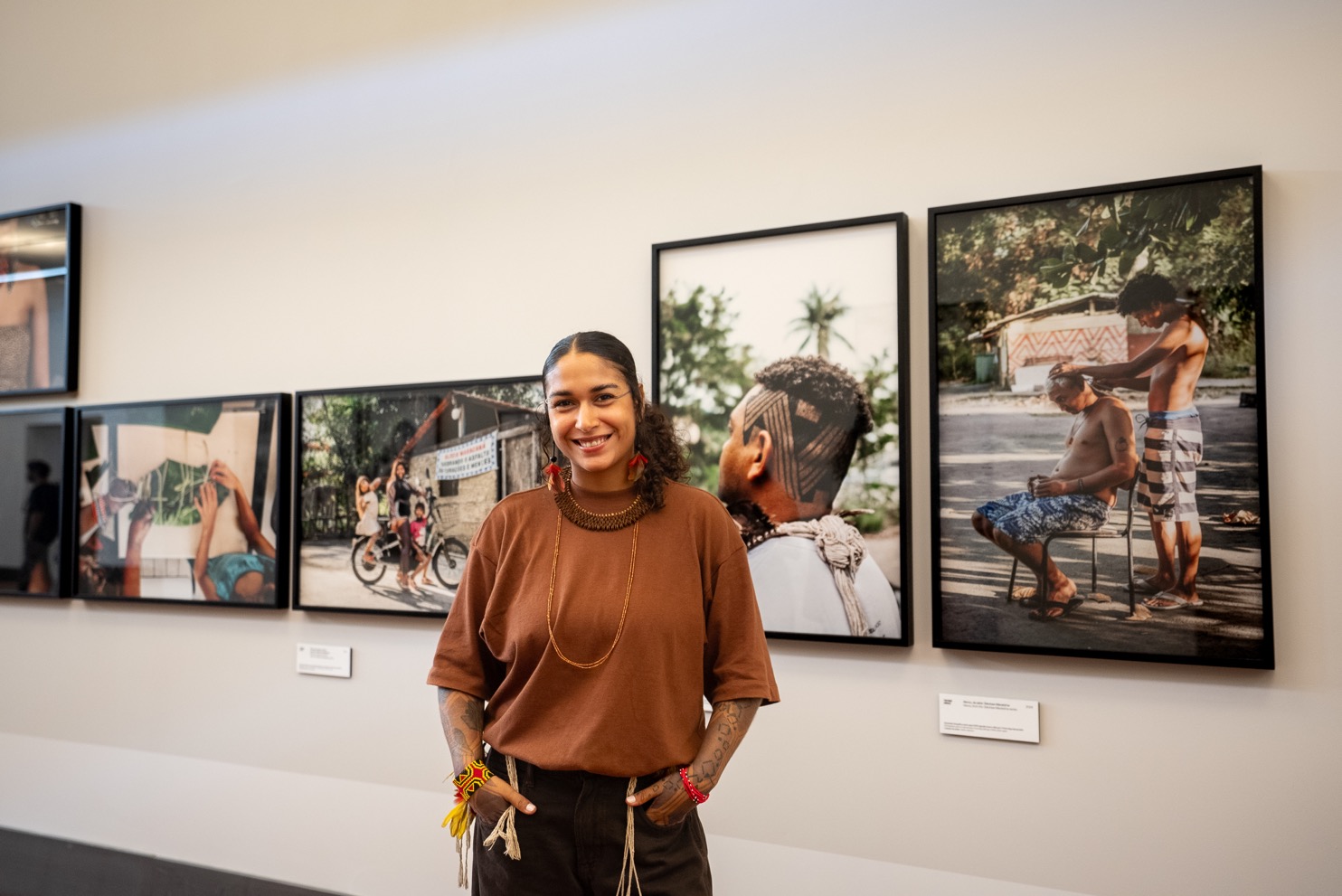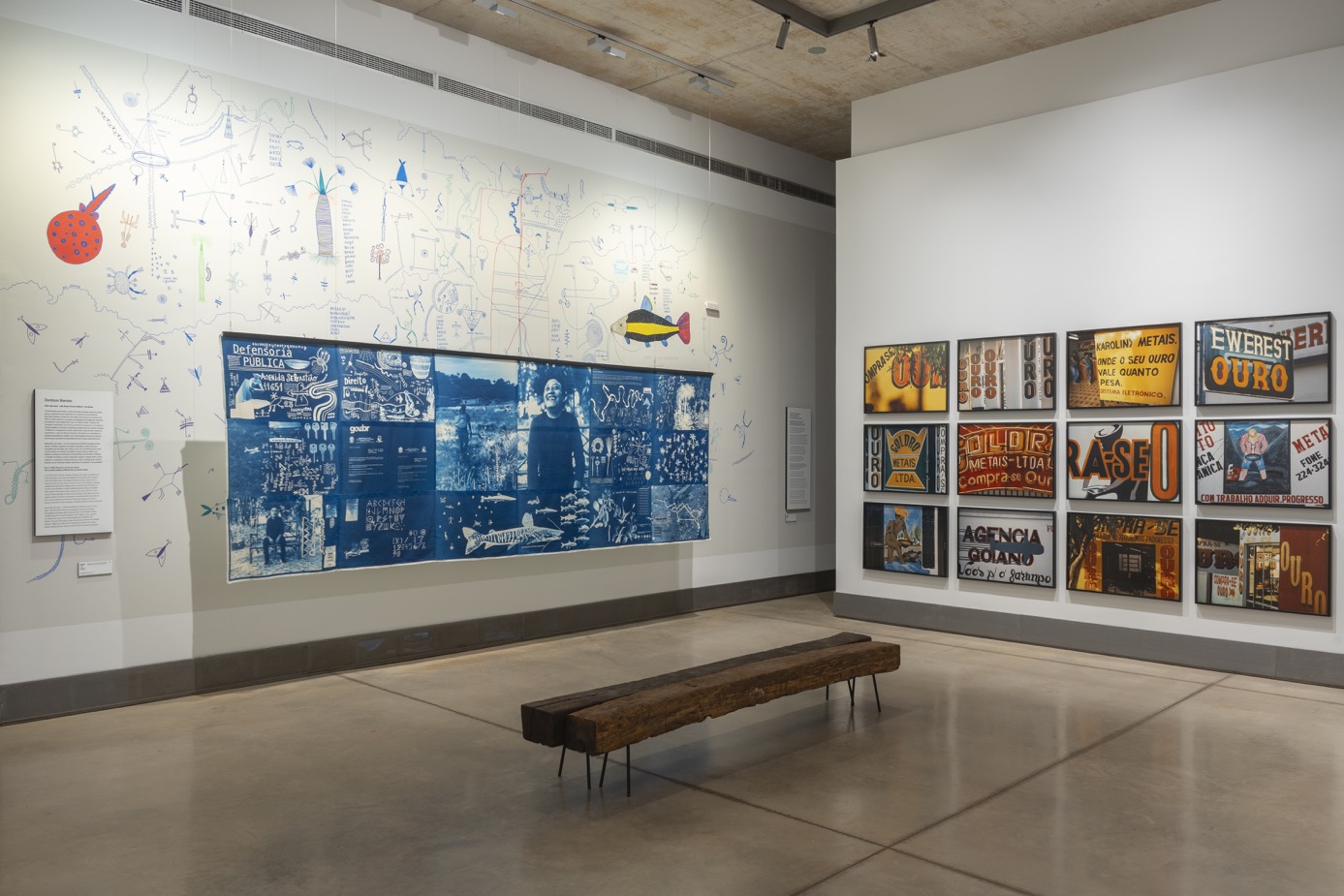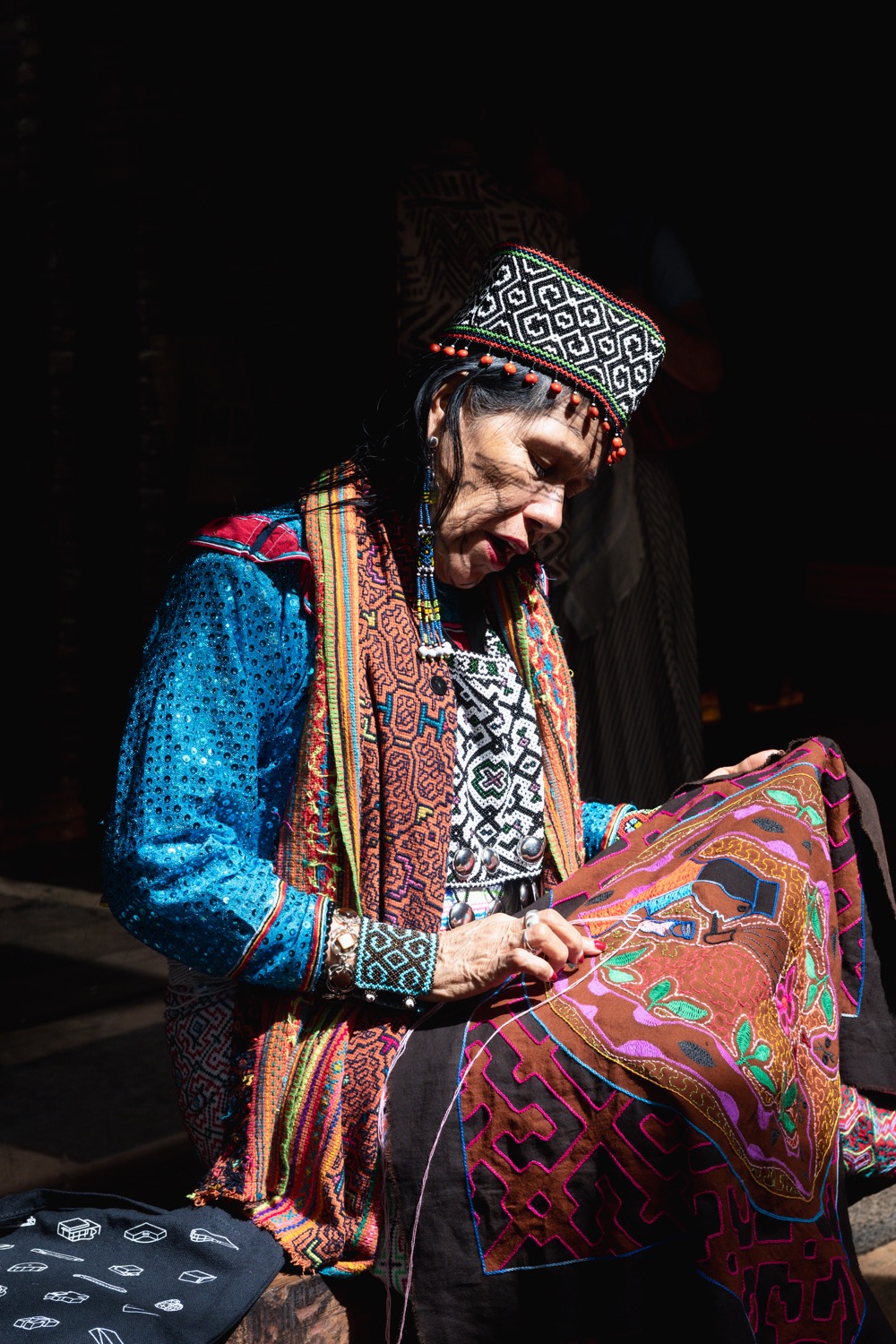
This past April, our Editor-in-Chief: danie valencia sepúlveda was at Inhotim to attend the reopening of the Claudia Andujar Gallery, a timely occasion to continue sustaining the questions that allow us to defend the struggle over spaces, the refusal of representational politics, and, in a radical way, the commitment to institutional rearticulation.
Renaming is not a minor gesture. When the Inhotim Institute [Brumadinho, Minas Gerais, Brazil] reopened the Claudia Andujar Gallery in April as Maxita Yano – earth house, according to the translation from Portuguese to Spanish – it was not only celebrating a decade of the space's existence, but also shifting the focus of attention: from the individual name to the collective territory. The eponymous exhibition, curated by Beatriz Lemus and with curatorial support from Varusa, embodies this transformation. Rather than focusing on the figure of the Swiss photographer, it articulates a dialogue between her historical work and the output of 22 Indigenous artists from the south of Ouramerica. The result is a living laboratory in which art, spirituality, territory, and politics are interwoven from their own perspectives.
Far from replicating the exoticizing script, the installation is based on a political gesture: using Andujar's work as a hinge to redefine what, until just under forty years ago, the museum categorized as "indigenous artifacts" or "crafts". Among the invited artists are: Elvira Espejo (BO), Denilson Baniwa (AM), Uyra (AM), Edgar Kanayko Xakriaba (MG) , Graciela Guarani (MS), Pulo Desana (AM), Alexandre Pankararu (PE), Olinda Silvano (PE), David Diaz Gonzales (PE), Julieth Morales (COL), Tinia Pankaru Guarani (PE), Tayna Uraz (RJ), Lanto’oy’ Unruh (PY), and Hutukara Associaçao Yanomami (HAY) herself.
Whites that are not canvases, but allies: Claudia Andujar, art-militancy
Claudia Andujar was born in Switzerland in 1931. Marked by war and displacement, she fled to the United States after the extermination of her Jewish family at the hands of the Nazis, and in 1955, she settled in Brazil. There she became one of the most influential photojournalists of her generation. Her encounter with the Yanomami people in 1977 changed the course of her career: she co-founded the Committee for the Creation of Yanomami Park and used her camera as a tool of resistance against extractivist threats and state violence.
Maxita Yano's first core welcomes us with the series Rio Negro [Black River] (1970-71), composed of zenithal shots of the Amazon. Although her work risks being reduced to ethnographic documentation, these images were proof and argument against the political persecution and anti-Indigenous racism of the Brazilian dictatorship—a racism that, like institutional dampness, continues to seep in even today.
Disputing the gaze
The history of Western art has sustained a racist distinction between “crafts” and “art” that still persists in museums and academic discourse. Under this logic, indigenous photography is accepted as a document, but rarely as an autonomous aesthetic production. Beatriz Lemus puts it this way: “Our job was to enhance and contextualize Andujar’s work.”
This exercise becomes tangible in the counterpoint between Andujar's zenithal shots and Uyra's images, where the human figure dissolves between plant textures and body pigments. There is no “performance” here for the external lens, but rather a fragment of the Amazonian worldview fixed on the photographic support. The power of Elvira Espejo Ayca, whose compositions and visual narratives engage with the memory of the Andes through the very materiality of the territories, is similar; and so is that of Edgar Kanayko Xakriaba, who interweaves political denunciation and ceremony in his images, challenging the modern separation between document and ritual.
Each thematic core is a response to the question of what happens when Indigenous visual narratives cease to be “objects” and become interlocutors that rewrite art history from within.
Open notes
The gallery's renaming does not close a cycle; it opens it. At Inhotim, one of the largest artistic institutions in our region, Maxita Yano's gesture explores the possibility of institutionalizing a collective dream without assimilating it. But the question remains: Can the “earth house” maintain its fertile soil when it is surrounded by the global pavement of contemporary art?
The exhibition will be open for the coming months, and the related public programming can be found on its website.







Renaming is not a minor gesture. When the Inhotim Institute [Brumadinho, Minas Gerais, Brazil] reopened the Claudia Andujar Gallery in April as Maxita Yano – earth house, according to the translation from Portuguese to Spanish – it was not only celebrating a decade of the space's existence, but also shifting the focus of attention: from the individual name to the collective territory. The eponymous exhibition, curated by Beatriz Lemus and with curatorial support from Varusa, embodies this transformation. Rather than focusing on the figure of the Swiss photographer, it articulates a dialogue between her historical work and the output of 22 Indigenous artists from the south of Ouramerica. The result is a living laboratory in which art, spirituality, territory, and politics are interwoven from their own perspectives.
Far from replicating the exoticizing script, the installation is based on a political gesture: using Andujar's work as a hinge to redefine what, until just under forty years ago, the museum categorized as "indigenous artifacts" or "crafts". Among the invited artists are: Elvira Espejo (BO), Denilson Baniwa (AM), Uyra (AM), Edgar Kanayko Xakriaba (MG) , Graciela Guarani (MS), Pulo Desana (AM), Alexandre Pankararu (PE), Olinda Silvano (PE), David Diaz Gonzales (PE), Julieth Morales (COL), Tinia Pankaru Guarani (PE), Tayna Uraz (RJ), Lanto’oy’ Unruh (PY), and Hutukara Associaçao Yanomami (HAY) herself.
Whites that are not canvases, but allies: Claudia Andujar, art-militancy
Claudia Andujar was born in Switzerland in 1931. Marked by war and displacement, she fled to the United States after the extermination of her Jewish family at the hands of the Nazis, and in 1955, she settled in Brazil. There she became one of the most influential photojournalists of her generation. Her encounter with the Yanomami people in 1977 changed the course of her career: she co-founded the Committee for the Creation of Yanomami Park and used her camera as a tool of resistance against extractivist threats and state violence.
Maxita Yano's first core welcomes us with the series Rio Negro [Black River] (1970-71), composed of zenithal shots of the Amazon. Although her work risks being reduced to ethnographic documentation, these images were proof and argument against the political persecution and anti-Indigenous racism of the Brazilian dictatorship—a racism that, like institutional dampness, continues to seep in even today.
Disputing the gaze
The history of Western art has sustained a racist distinction between “crafts” and “art” that still persists in museums and academic discourse. Under this logic, indigenous photography is accepted as a document, but rarely as an autonomous aesthetic production. Beatriz Lemus puts it this way: “Our job was to enhance and contextualize Andujar’s work.”
This exercise becomes tangible in the counterpoint between Andujar's zenithal shots and Uyra's images, where the human figure dissolves between plant textures and body pigments. There is no “performance” here for the external lens, but rather a fragment of the Amazonian worldview fixed on the photographic support. The power of Elvira Espejo Ayca, whose compositions and visual narratives engage with the memory of the Andes through the very materiality of the territories, is similar; and so is that of Edgar Kanayko Xakriaba, who interweaves political denunciation and ceremony in his images, challenging the modern separation between document and ritual.
Each thematic core is a response to the question of what happens when Indigenous visual narratives cease to be “objects” and become interlocutors that rewrite art history from within.
Open notes
The gallery's renaming does not close a cycle; it opens it. At Inhotim, one of the largest artistic institutions in our region, Maxita Yano's gesture explores the possibility of institutionalizing a collective dream without assimilating it. But the question remains: Can the “earth house” maintain its fertile soil when it is surrounded by the global pavement of contemporary art?
The exhibition will be open for the coming months, and the related public programming can be found on its website.







